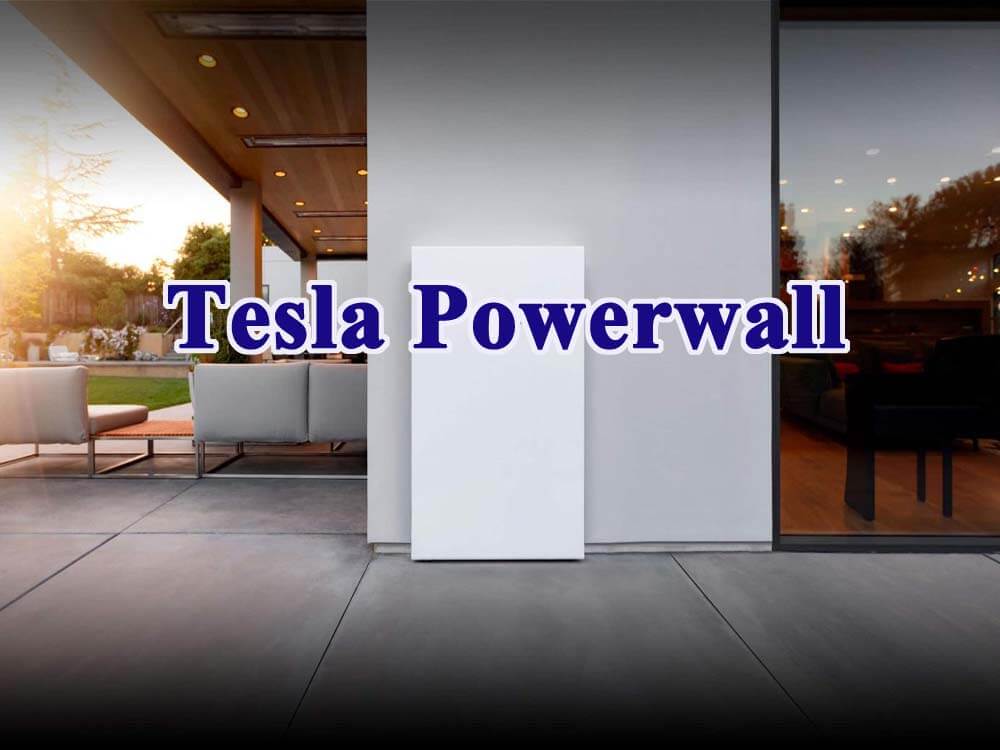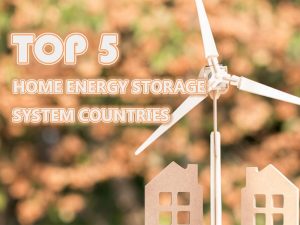Why Tesla powerwall is popular and FAQs

In some countries, living away from urban areas has electricity challenges as shore power isn’t available. The main source of energy is solar panels. To store electricity, we need batteries. In this article we discuss about the Tesla powerwall product, see what makes it special and why it is so popular.
Why tesla powerwall is widely used
Ordinary batteries can’t be a great solution for powering a house as their capacities are very limited and they need a lot of calculations and wiring. The best option to solve the problem is powerwall battery. Instead of doing complicated connections and wiring of batteries, installing a powerwall saves the headache. Amongst the hot products in the market is the Tesla powerwall. Available in 3 models, it is a highly reliable solution to store energy from solar panels.
What is powerwall and Tesla powerwall
Tesla powerwall is a rechargeable backup lithium-ion battery used in homes. It is recharged by solar panels and it has the capacity to power the entire house when the grid is down. powerwall is a great choice for the battery packs used to store electricity from solar panels.
It has better capacity and can last for much longer periods of time compared to ordinary systems. Tesla powerwall is specially designed to be installed on the wall of the home, it does not take up space and is easy to install, so it is popular with many families. As a result, many energy storage battery companies have begun to produce powerwalls. Next, let’s take a look at the performance and related problems of Tesla powerwalls, and how we should choose powerwalls.
The features of Tesla powerwall
Tesla powerwall has many features allowing it to be the best fit for powering a home. Here is the information collected from Internet:
● Nominal voltage: 50V
● Nominal capacity: the built-in lithium-ion battery pack allows a capacity of 13.5 KWh.
● Energy capacity: continuous energy capacity is 5.8 KWh, and the peak is 10 KWh.
● Size: each model of Tesla powerwall has a specific size. The powerwall 1: 51.3 in × 34 in × 7.2 in (130 cm × 86 cm × 18 cm). Pwerwall 2: 45.3 in × 29.6 in × 5.75 in (115.1 cm × 75.2 cm × 14.6 cm). powerwall+: 62.8 in × 29.7 in × 6.3 in (160 cm × 75 cm × 16 cm).
● Cell type: Tesla powerwall is made of lithium-ion NMC cells.
● Cycle life: the estimated life cycle is 5000 cycles.
● Safety: the powerwall is equipped with an internal liquid cooling system to prevent temperature rises and maintain safe limits. A BMS (Battery Management System) controls the lithium-ion batteries and allows them to work in the perfect conditions.
● Ingress protection rating: IP 67 for the battery and power electronics, and IP 56 for the wiring compartment.
● Backup Power: 9.6 KW / 7KW continuous
● Installation: Internet connection is a must in order to install Tesla powerwall. In general, the installation is done by a team of professionals and doesn’t require a lot of time. main components of the system should be put in place like the;
solar inverter, main panel, Backup gateway, and the utility meter. Once everything is mounted and connected together the functioning is tested to make sure the system works properly.
● Warranty: Tesla provides buyers with a 10-year war.
How to choose the best powerwall
To have a stable power supply, choosing the right powerwall is important to make sure you have enough energy for your needs.
● Capacity:
the capacity determines how long it can power your home before it’s fully discharged. Most rates are provided for an 80% discharge to protect the battery in long term. It is necessary to see how much capacity battery is needed from the average daily power usage of the family. The most commonly used is 51.2v 200ah lithium ion battery.
● Lifespan:
The lifespan is not a problem for powerwalls. When we choose energy storage batteries, we pursue a high number of cycles. As we all know, the number of cycles of ternary lithium is 2000 times, and the number of cycles of lithium iron phosphate batteries is 5000 times.
● Safety:
Whether it is industrial or home energy storage, the most important thing in battery use is safety. It is necessary to ensure that the lines in the powerwall are very tidy, whether the materials used in the battery are of high safety, waterproof value, etc., to ensure safe electricity use. Lithium iron phosphate batteries are suitable for large-scale energy storage, so they are popular in the energy storage industry.
● Ambient working environment:
Tesla powerwall is designed with features allowing it to perform in all conditions. High-temperature protection is provided thanks to a liquid cooling system. The powerwall is also waterproof to protect it from damage due to water infiltration.
● Warranty :
powerwall can save electricity, but as a long-term device, it needs a long-term guarantee, so you need to pay attention to the warranty period of the powerwall manufacturer and whether it can provide remote upgrade and update services.
● Manufacturer:
It is safest to choose a well-known manufacturer, such as top 10 powerwall manufacturers companies including Tesla powerwall, which are worth referring to, but the cost will also be high. For higher cost performance, you can search for more powerwall odm lithium ion battery pack manufacturer in China, choose a good manufacturer from battery industry experience and production capacity as well as product reports, certificates, etc.
FAQs about Tesla powerwall
How many solar panels do I need for a Tesla powerwall
The number of solar panels required for a Tesla powerwall depends on a few parameters, the power need, house location, roof surface… Power need is the top criterion for the number of solar panels required. It determines the size of the powerwall so the amount of energy necessary to recharge it. Location is an important parameter to consider for making the right choice of panel number.
Among them, a Tesla powerwall generally can be equipped with 4kw solar panels. It determines the sun’s peak hours and also the amount of energy the sun can provide in the region. Knowing this information allows you to determine the size, number of panels, and the time they will take to fully charge the battery.
Roof surface and type should be considered, more space means more panels.
The materials of the roof are also important as they may cause problems for installing panels. If the power needs are not excessive and limited to some emergency systems, one or two panels may be enough for a small house.
How long can a Tesla powerwall power a home
The Tesla powerwall with a capacity of 13.5 KWh can run a house for 3 to 5 days depending on running systems. If set properly, the powerwall will provide all essentials with energy for that period of time. But that also depends on the solar panels charging it and the stored energy. Running all the systems in the house will significantly reduce the runtime to just a few hours.
Can you go off grid with Tesla powerwall
Tesla powerwall is equipped with a feature allowing the user to go off-grid. Using a smartphone app, the system can be disconnected from the utility grid simulating a power outage. In order to reduce energy consumption, Tesla powerwall has a feature allowing the user to connect solar panels and reduce less grid power.
The Self-powered mode gives more independence and could help reduce expenses. Tesla powerwall and solar panels can be an off-grid power solution for homes in remote areas.
Can I install a Tesla powerwall without solar
Tesla powerwall can be installed without solar panels. In that case, it will be recharged from grid power and work as a backup for electricity shortages. It can help reduce expenses by providing energy in peak periods. If connected to solar panels, the powerwall won’t be able to charge by the grid.
How much is a Tesla powerwall installed
The cost of the Tesla powerwall varies between 8000$ and 11500$. Purchasing from Tesla, you can only get the entire pack: the solar system including powerwall and inverter. However, when buying from a Tesla-certified installer, you can get the powerwall.
Alone it costs about 8000$, with installation the price is about 11500$. Some local and federal debates can help you reduce expenses and save some extra money (These are searched for online data).
A fully charged Tesla Power wall can last up to 5 days powering essential systems. Providing enough energy for all the home’s equipment draws a lot of electricity and may require more than one powerwall.
Can Tesla powerwall be installed outside
Tesla powerwall is equipped with features allowing it to be mounted anywhere that fits the user’s requirements and available space. it can be installed inside or outside without a problem.
The powerwall has a high Ingress protection rate and a liquid cooling system to maintain the temperature. That allows it to keep its required operating conditions and be protected from external factors.
Conclusion
To sum it up, Tesla powerwall could be a great solution for powering homes. It has great specs allowing it to be the best choice as a backup source or the main power supply for remote areas. Instead of using multiple batteries, difficult wiring, and a lot of time, the Tesla powerwall could be easily put in place and work perfectly.
The system could also save money by an off-grid mode allowing the user to run on solar panels. If you want to inquire about powerwall detail, please click the button contact us.




























2 thoughts on “Why Tesla powerwall is popular and FAQs”
I commend you on your thorough and engaging coverage of the Tesla Powerwall. Your article succeeded in conveying the advantages and practical applications of this energy storage solution in a way that would resonate with both environmentally conscious homeowners and those seeking greater energy reliability.
Thank you for sharing your knowledge and insights on the Tesla Powerwall. I look forward to reading more of your articles on renewable energy and sustainable technologies in the future.
Hi there, thanks for your comment, you could take a look at our recent article, hope it is also useful to you~!